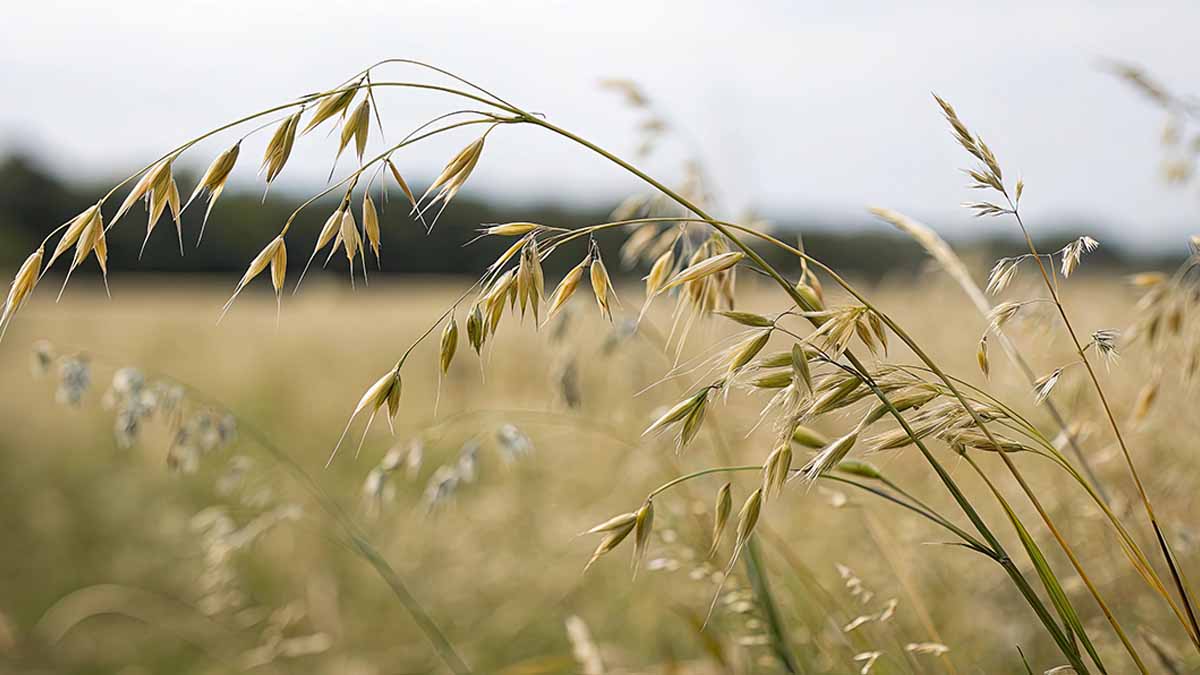Harvest Weed Challenges
July 30, 2025
Amid winter grain harvest, southern and eastern Idaho farmers are reporting strong yields but also big problems with herbicide-resistant weeds, according to experts with University of Idaho Extension.
Growers have had an especially tough time controlling resistant wild oats. Wild oats compete with crops for limited resources and can reduce wheat yields by more than 24% and barley yields by 18% at a density of 10 plants per square foot, according to a weed management Extension publication authored by a team of U of I, Oregon State University and Washington State University weed scientists.
Weed challenges aside, most winter wheat and barley yields in the region should be outstanding.
Juliet Marshall, UI Extension cereals pathologist and associate director of the Idaho Agricultural Experiment Station, has confirmed Magic Valley feed barley yields exceeding 220 bushels per acre, and she’s optimistic those numbers aren’t outliers.
The region’s growers began harvesting winter grains in mid-July. Marshall believes a long fall following winter grain planting, the combination of warm days and cool nights throughout the current season and favorable growing conditions — aside from weed pressure and limited foot-rot challenges — have combined to boost yields.
“We’ve had some really good, consistently cool nights,” Marshall said. “Even though temperatures have been hot overall, consistently cool nights is good for grain fill.”
Marshall anticipates spring grain crops will be average yielding, as growth of many spring-planted fields has been set back by late-season frosts. A short water supply could also curb spring grain yields, as some growers are opting to shift water allocated for small grains to potatoes and other higher-value crops.
Marshall also advises growers to be careful in their weed management to avoid even greater problems next season. She’s received reports of wild oats gaining a foothold in fields from Idaho Falls north to Ashton and throughout southeast Idaho.
Albert Adjesiwor, a UI Extension weed scientist, has also been inundated with calls from growers unable to control wild oats.
“I’ve gotten so many wild oats calls this year, more than I’ve ever gotten in my entire time here, because they just can’t kill it,” Adjesiwor said. “There are some fields where it’s a thick stand of wild oats, and at those high densities you’d expect to see 20-30% yield losses.”
Pinoxaden, which is the active ingredient in Axial herbicide, has been a primary tool for controlling wild oats in the region. Adjesiwor noticed some pinoxaden resistance in wild oats when he first arrived at the university in 2021, and resistance has progressively grown stronger. He recently screened wild oats sampled from 75 farm fields throughout the region to assess herbicide resistance, confirming the greatest pinoxaden problems in southeast Idaho east of American Falls.
“Farmers are throwing different things at it, and it doesn’t seem to be working. Not only are you getting a yield loss, but then you spend a lot of money on herbicides that don’t provide adequate control,” Adjesiwor said.
If possible, Adjesiwor recommends that farmers with high densities of wild oats this season rotate next season to broadleaf crops such as potatoes or sugarbeets, expanding their herbicide options.
Another approach would be to plant CoAXium wheat, which is bred to resist applications of quizalofop herbicide. However, the weed has also shown resistance to quizalofop, though the resistance is not as pronounced as with pinoxaden. Growers in tilled systems can also apply triallate (Far-GO/Avadex) as this herbicide still appears effective on most wild oats collected from southern Idaho, Adjesiwor said. Triallate must be mechanically incorporated into soil to provide effective wild oat control.
Growers may also wish to plant Clearfield wheat, which is bred to resist applications of imazamox-based herbicides, such as Beyond. The downside of using Clearfield is plant-back restrictions against following wheat crops with potatoes, sugarbeets or barley, which may be harmed by imazamox.
Marshall plans to include the pros and cons of using Clearfield wheat varieties to control wild oats as a topic of the UI Extension cereal school scheduled for Feb. 4 in Fort Hall.

About the University of Idaho
The University of Idaho, home of the Vandals, is Idaho’s land-grant, national research university. From its residential campus in Moscow, U of I serves the state of Idaho through educational centers in Boise, Coeur d’Alene and Idaho Falls, nine research and Extension centers, plus Extension offices in 42 counties. Home to more than 12,000 students statewide, U of I is a leader in student-centered learning and excels at interdisciplinary research, service to businesses and communities, and in advancing diversity, citizenship and global outreach. U of I competes in the Big Sky and Western Athletic conferences. Learn more at uidaho.edu.






